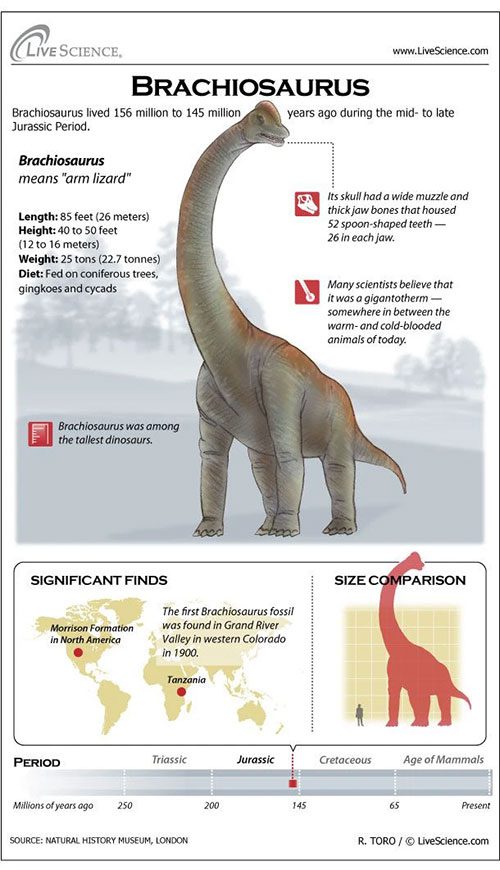Brachiosaurus is a species of dinosaur that walked on four legs, with its front legs being longer than its hind legs. These unusually large front legs, combined with a very long neck, gave Brachiosaurus a height of 12 to 16 meters.
The body of the Brachiosaurus dinosaur is approximately 85 feet (26 meters) long and weighs between 33 to 88 tons. Brachiosaurus was a herbivorous dinosaur that swallowed its food whole without chewing, digesting the plants in its intestines.
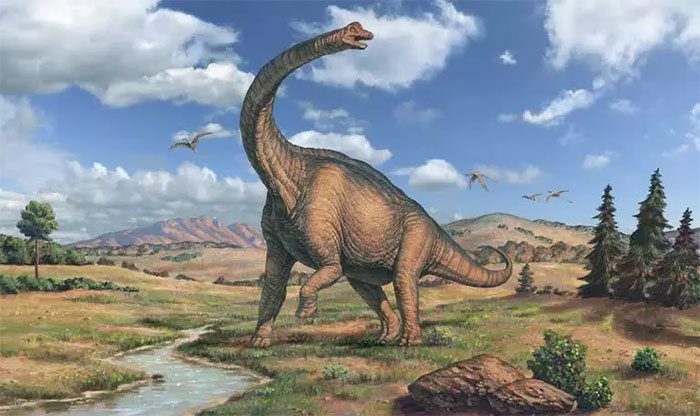
The precise classification of prehistoric dinosaur species in general and Brachiosaurus in particular remains a contentious issue among paleontologists. However, it is clear that Brachiosaurus has many relatives and is one of the important links in the evolutionary tree of prehistoric dinosaurs.
Interesting Facts
Brachiosaurus was an unusual dinosaur that lived approximately 155.7 to 150.8 million years ago during the middle to late Jurassic period. Specimens are primarily found in the fossil-rich Morrison Formation in North America, but this dinosaur did not resemble any other species that roamed the area. Its long neck made it look like a giraffe, and its front legs were longer than its hind legs. In fact, the name Brachiosaurus means “arm lizard.”
Brachiosaurus may have been a warm-blooded animal. Some models suggest that Brachiosaurus and other sauropods (long-necked dinosaurs) were gigantic animals—large enough to maintain a high body temperature. Calculations based on this theory indicate that their body temperature could reach up to 113 degrees F (45 degrees C).
However, in 2011, researchers were able to directly calculate the dinosaur’s temperature at 100.8 F (38.2 C) by measuring the ratio of certain isotopes (atoms of elements with different numbers of neutrons) in Brachiosaurus teeth. The study published in the journal Science showed that Brachiosaurus possessed behavioral and biological mechanisms to maintain a stable body temperature, such as having a lower metabolism when mature.
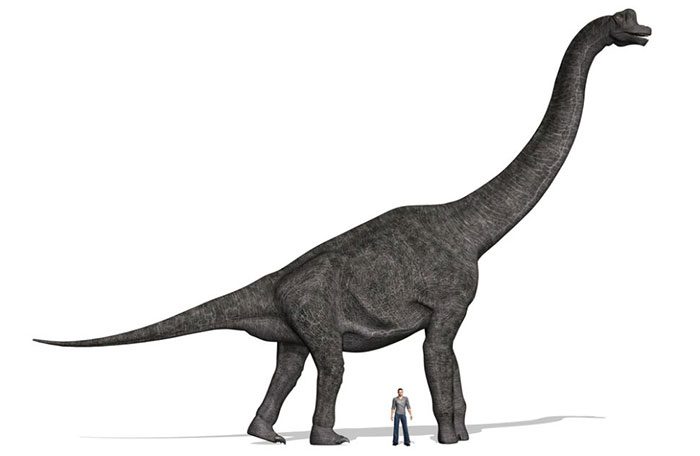
The Brachiosaurus was named in ancient Greek, where “Brachio” means arm and “saurus” means lizard. This name seems to evoke thoughts of the special features of its two front limbs. However, after specific discoveries of specimens and in-depth studies by paleontologists, Brachiosaurus was confirmed to have a shape and movement style quite similar to modern giraffes.
Paleontologists once believed that Brachiosaurus primarily lived in water, partly due to its nostrils being located on the top of its egg-shaped head. However, this may not be accurate for several reasons. First, sauropods have air-filled sacs inside their bodies, which would make them buoyant and unstable if they entered deep water, according to a 2004 study published in Biology Letters.
Instead, Brachiosaurus was a fully terrestrial dinosaur and could only adapt to flat areas due to its enormous size, making it unsuitable for moving in challenging terrains like hills, according to a 2014 study in the Journal of Theoretical Biology.
How Did Brachiosaurus Protect Itself?
Brachiosaurus likely defended itself by using its tail or legs to smash predators, as it had no other means of protection. However, based on the body structure revealed by fossils, the tail of this species is short and small compared to its entire body, meaning the force generated from tail strikes would not be significant, making tail-whipping an unlikely form of defense.
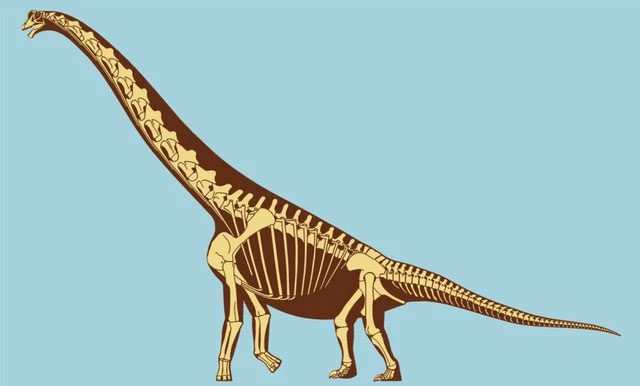
Generally, the slower an animal develops, the longer its lifespan. According to the latest research and reports on Brachiosaurus, young individuals would need about 10 years to reach full size and nearly another 100 years to fully mature. Thus, scientists conclude that in addition to being one of the largest dinosaurs to ever appear on Earth, Brachiosaurus was also one of the longest-lived dinosaurs.
Unlike most other sauropods, Brachiosaurus had long front limbs that caused its back to slope. If its neck extended straight out from its body, as is commonly believed today, this would lead to the body tending to rise upward, although the exact angle and flexibility of the neck are still debated. Therefore, it would be extremely difficult and impractical for them to rear up and strike predators with their front legs.
Consequently, many believe that due to Brachiosaurus’s enormous size, predators would likely overlook them in favor of smaller dinosaurs. However, this seems quite unreasonable, as looking at today’s ecosystems, all animals, large and small, possess their own defense mechanisms. Even the African savanna elephant, the largest land animal today, has special defense mechanisms that do not solely rely on size.
Thus, many have proposed the hypothesis that this species utilized its massive size and long neck to create vomit as a defensive mechanism.
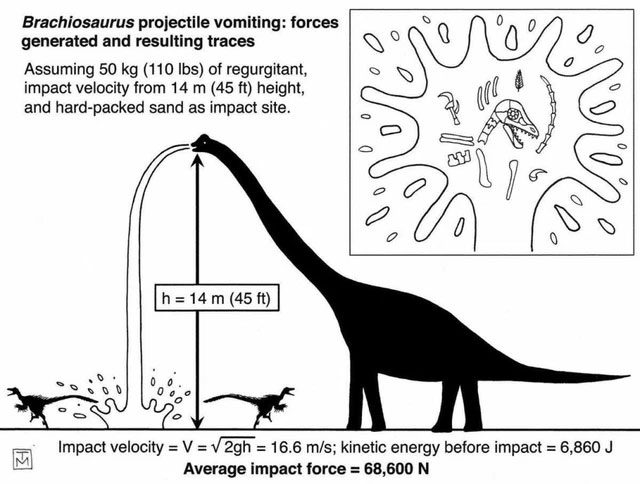
To see if this is truly feasible, let’s assume a Brachiosaurus dinosaur stands 14 meters tall at the mouth, and its vomit weighs about 50 kg. Under the pressure generated from within the body, combined with the height of 14 meters, scientists could calculate that the force generated from such vomit from a Brachiosaurus would reach approximately 68,600 Newtons (equivalent to 7 tons).
This is more than enough to kill or crush the bones of smaller carnivorous dinosaurs, sufficient to injure medium and large carnivorous dinosaurs.
